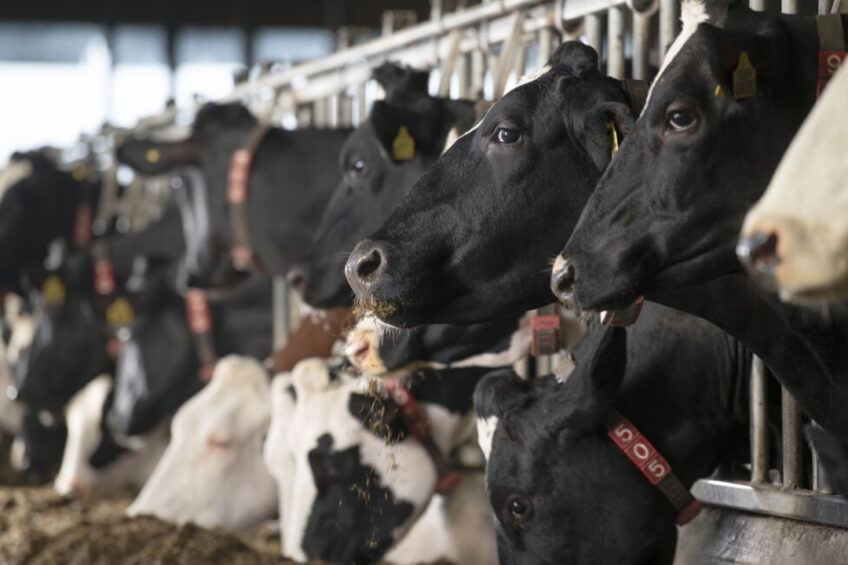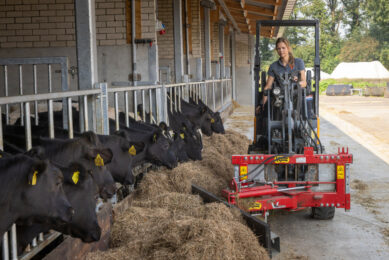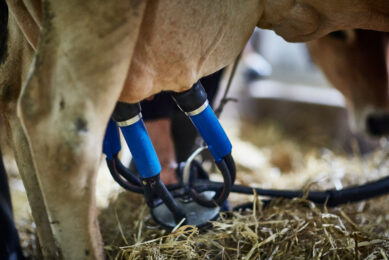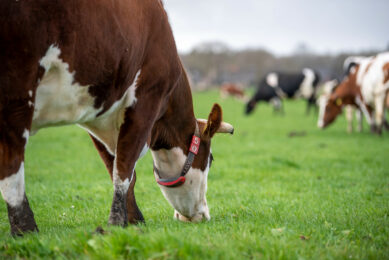Antibiotic use in UK dairy sector low but more data needed

Evidence from limited usage data in the UK dairy sector suggests a comparatively low level of antibiotic use, but more data is needed to demonstrate that reducing usage remains a key priority.
The development and launch of the Agriculture and Horticulture Development Board (AHDB) Medicine Hub is seen as the tool that will help evidence the responsible use of antibiotics and health and welfare claims within the ruminant sectors.
Development of the Medicine Hub, which is collating data across other devolved regions, has been backed by the Kingshay App, FarmAssist – a database managed and run by National Milk Laboratories (NML) – on behalf of milk buyers, VetIMPRESS, plus others, also provide antibiotic collection services to the dairy sector and others.
The latest annual report, released by the Responsible Use of Medicines in Agriculture Alliance (RUMA), also highlights the development of the Defra Health and Welfare Pathway (England), and the annual vet visit looks to provide another route to conversations between vets and farmers on farm health challenges, which is expected to result in improved data collection and better understanding for both parties in terms of disease risk and medicine use on farm.
A route to measuring calf mortality on a national level, to monitor whether reductions in antimicrobial use are rational, has been agreed upon in principle and will progress once British Cattle Movement Service (BCMS) data has been obtained.
Measurements in dairy
The RUMA task Force 2 targets for dairy include:
· Capturing data from 95% of UK dairy herds by 2024 – there has been progress in terms of an increase during last year of the number of year-end datasets uploaded by the dairy sector to the Medicine Hub to 1,132. From this summer, members of the Farm Assured Welsh Livestock scheme are required to have their antibiotic usage calculated on a new Welsh antimicrobial use calculator. To date, 265 dairy farms have completed their measurement of antibiotic use on the platform.
· Data from 50% of UK calf-rearing units captured by 2024 – some of the main specialist calf-rearing companies are now supplying data into the Medicine Hub.
· Reduced non-compliances annually in dairy farm assurance for the development of annual health/medicines plan – there is now a 90% compliance in dairy and 79% compliance in beef.
· Annual reduction in 3-year rolling average for sales of lactating cow tubes in the dairy sector with a baseline of 0.69 DCDVet and annual reduction in 3-year rolling average of sales of dry cow tubes in dairy with a baseline of 0.59 DCDVet – both these indicators showed falls to below the baseline figure.
One of the key progress indicators is the fall in dairy lameness and mortality from various 2019 indicators. The report said the AHDB Sentinel Herds Project, which collated data from 92 sentinel farms to monitor trends in mastitis over time at a national level, showed a significant reduction in mean clinical mastitis rates from 29.9 to 24.9 cases per 100 cows per year. The reduction in clinical cases is likely to result in reduced use of antimicrobial therapy.
A major change in prescribing habits over the past decade has been the widespread introduction of selective dry cow therapy, such as withholding antimicrobial treatment in uninfected cows. The report said it was encouraging that this had not led to a rise in new infections over the dry period. Between 2020 and 2021 there was a significant reduction of 15.9% in the rate of clinical cases of dry period origin.
AHDB found that in its third year of its Herd Advance project that there was a reduction in median clinical mastitis incidence rates from 23.5 to 20.5 cases per 100 cows per year. Similarly, farmers who had signed up to the full AHDB Healthy Feet programme reported a drop in median lameness incidence rates from 20 to 18 cases per 100 cows per year.
However, there are still areas where information is outstanding. These include:
· Details of the reduction in dairy mg/kg by 2024 of the Highest Priority antibiotic use, the number of calves treated with antibiotics, general centralised antibiotic use data and general mortality rates in dairy cows and calves.
Fall in antibiotic use
Cat McLaughlin, RUMA chair and chair of the RUMA Targets Task Force 2, said it was important to reiterate that the falls in antibiotic use that had been achieved had been done through a collaborative voluntary effort.
“The successes to date across the industry has put the UK ahead of most food-producing EU countries and the current RUMA targets up to 2024 further reinforce the ongoing commitment across all the sectors to achieve sustainable reductions.”
Abigail Seager, veterinary medicines directorate chief executive, said she was delighted with the continued progress in this year’s Veterinary Antimicrobial Resistance and Sales Surveillance (VARSS). Sales for food-producing animals (mg/kg) have fallen from 62.3 mg/kg in 2014 to just 28.3mg/kg last year, a fall of 55% and the lowest sales to date.
Sales of Highest Priority Critically Important Antibiotics (HP-CIAs) in food-producing animals account for just 0.4% of total sales and have dropped from 0.14mg/kg in 2020 to 0.12mg/kg – an 18% decrease.
Total tonnage sales for all animals have fallen from 447 tonnes in 2014 to just 212 last year.
Join 13,000+ subscribers
Subscribe to our newsletter to stay updated about all the need-to-know content in the dairy sector, two times a week.










